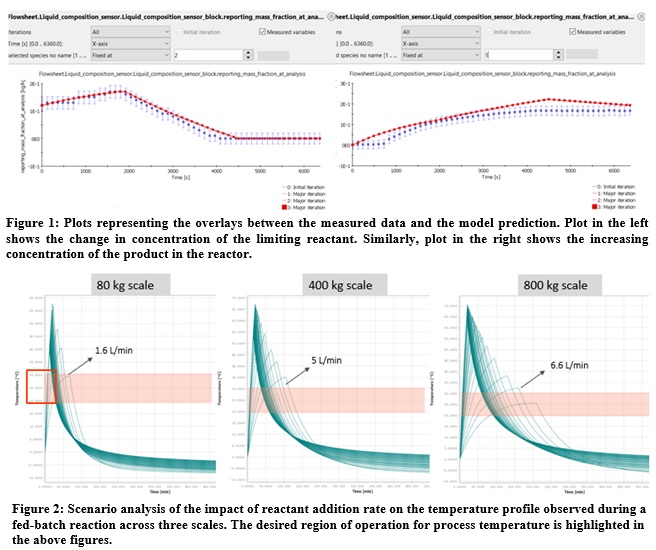2020 Virtual AIChE Annual Meeting
(435b) Utilizing Mechanistic Modelling to Support Scale-up of Fed-Batch Reaction Process
Authors
This work involves the application of mechanistic modelling of a fed-batch reaction process to help support process scale-up. The reaction kinetic modelling was combined with mixing and heat transfer effects in order to describe the reaction process at laboratory scale using a RC1 reactor. Scale-up calculations were performed, which included optimization of process parameters to ensure that the exothermic reaction was performed within the temperature limits recommended for the reactor. The main of objective of this activity was to assess the process of developing and scaling up a reaction process in a CSTR from reaction kinetics regression to inclusion of mixing and heat transfer effects as a function of scale. Additionally, this work intended to develop an industrial workflow to document how mechanistic reaction modelling could be utilised in this case. This workflow involved the following steps:
- Regress the kinetic parameters of a CSTR that combines the reaction kinetic modelling with mixing and heat transfer
- Assess the scaling up capability of the model
- Optimize the process parameters to obtain the desired qualities
Upon completion of step 2, the validated mechanistic reactor model was utilised to assess the impact of dosing flowrate on the maximum temperature observed during the reaction process with increasing scale. In this process, the feed rate is used to control the temperature in the reactor. To study this impact, a number of uncertainty analyses were performed to evaluate the reactor temperature with varying feed flowrate. The dynamics of the reactor temperature can be seen in Figure 1 below across three productions scales, namely 80 kg, 400 kg and 800 kg scales. These predictions can be used to define the minimum and maximum reactant feed rates for each scale to ensure operation of the reaction within the desired range of temperatures, shown by the highlighted region in the plots below.
